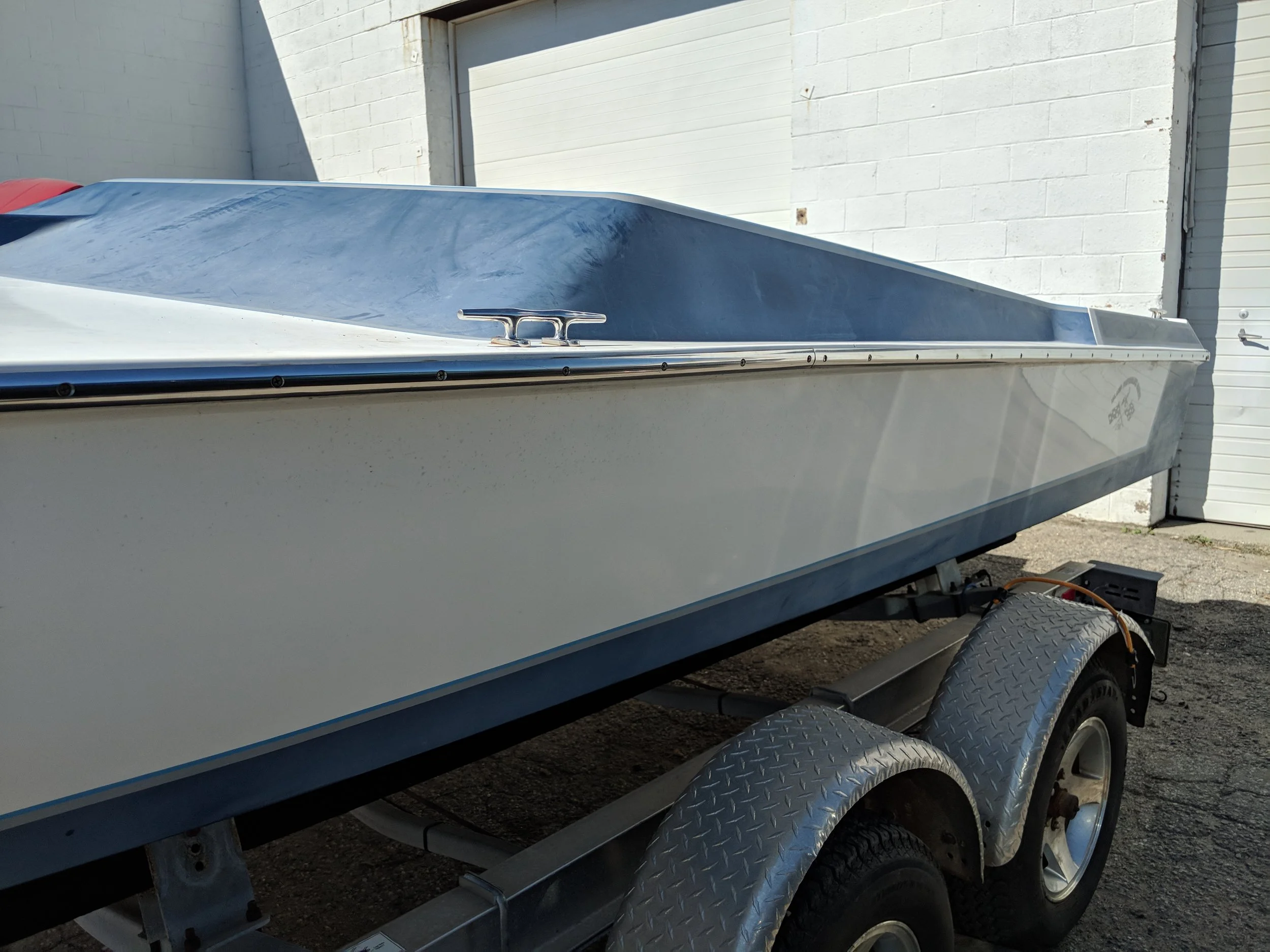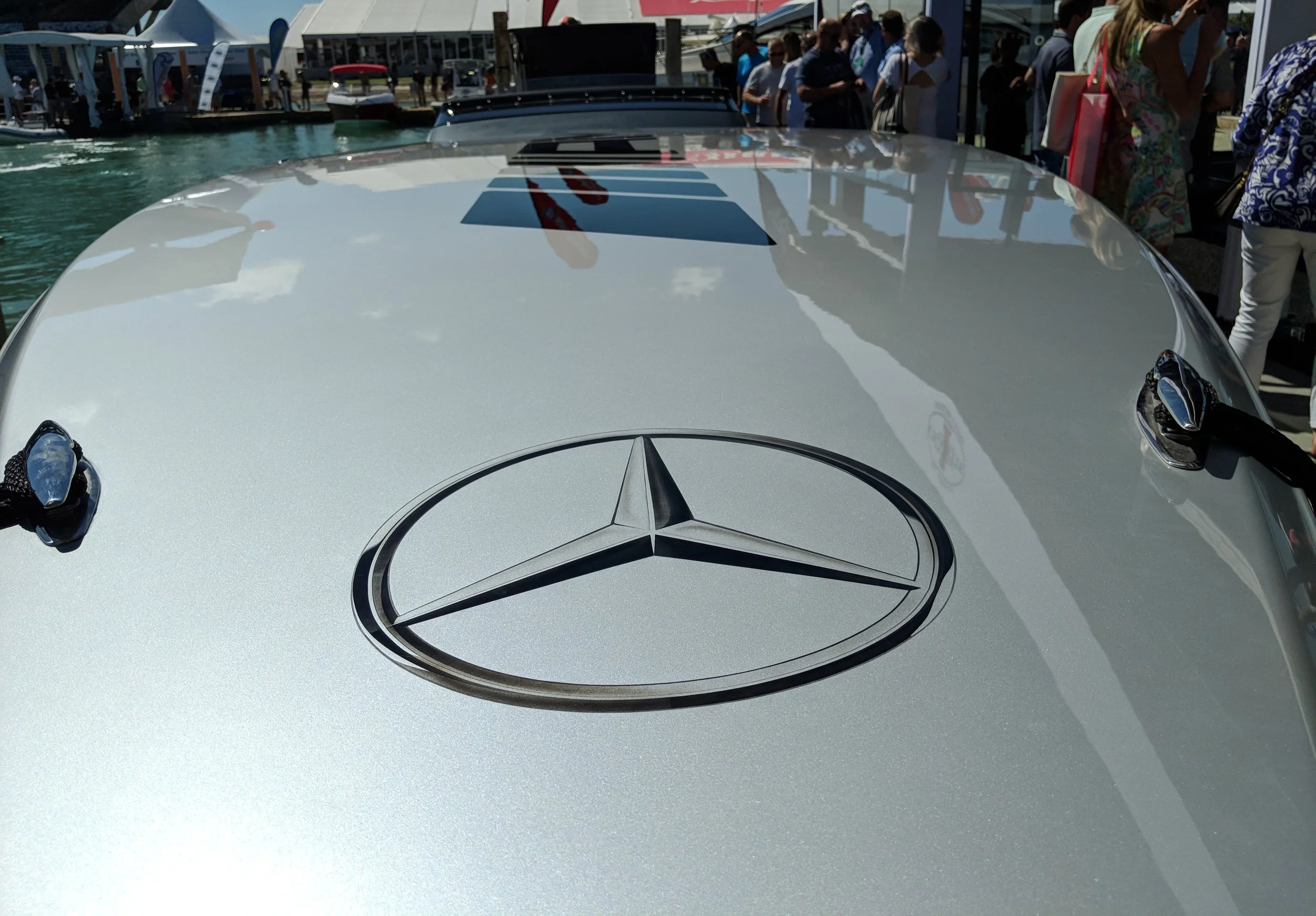Even though most performance boaters are looking for the most power possible on their hull, I get more excited about balance and efficiency.
Project Activator Episode 2: Engine Choices
In this episode of Project Activator we talk about some of the engines available and narrow it down to three choices.
The Cats: New Outboard Tunnels Taking Over
For performance boats the big eye opener is the proliferation of outboard tunnels of all sizes, with the 28’ to 36 size being extremely popular. Why is that?
Material Innovation: Composites
In this article, we are were fortunate enough to ask Jean Pierre Mouligne, from Gurit, a global leader in composite materials, some questions about some of their marine products. We talk about a new breakthrough technology that is very exciting for builders, some features and benefits of modern core materials as well as their application.
Project Activator: Introduction
With great excitement, we are announcing our own restoration project: Project Activator. After careful consideration and lots of tire kicking, we finally found our boat. We have acquired a 1990 22 Activator that is in need of some serious help.
Precision Handling: Lower Units, Mounts, Steering
One of the biggest safety and performance considerations for any high performance boat is high speed handling, and although the hull design is critical to handling, the setup is vital
Bad Boat Design: Why Family Boats are Horrible
After being back from the recent Miami Boat Show and sobering up, finding my pants and gathering my thoughts, I wanted to write about bad boat design. There are several serious design flaws that I see that are most prevalent in family type boats from major manufacturers
Cigarette Racing and AMG: Forging a Relationship
When you think about it at first, the long standing relationship between AMG and Cigarette Racing makes no sense. The famed offshore boat builder, based in the Miami Florida area for its whole existence, born in the hustle and bustle of early offshore racing in South Florida has very little in common with AMG, on the surface.
Miami Boat Show 2018: Mercury Marine
In a launch that was much anticipated, Mercury Marine delivered an all new 3.4 V6 outboard in the 175, 200 and 225 horsepower range.
Carl Kiekhaefer: Marine Industry Revolutionist
In every industry there are pioneers, inventors and hawkers but the real changemakers are the ones that are revolutionists. They are seldom the first in any given arena but they are the first to repurpose, reinvent and create markets that weren’t realized before. Carl Kiekhaefer was a revolutionist engineer that used his passion for engineering, competitiveness and salesmanship to change the marine industry.
Best Midsize Offshore Boats Right Now
One difficult thing as a boater is finding the ideal boat, the hull that fills most of your needs. Usually, the answer depends on where you boat, who you boat with and what you do on the water. If you run on the ocean or a very large lake, you realize quickly that you need some deadrise and some freeboard to play in the big waves.
1975 Checkmate V-Mate: A Family Project
The great thing about restorations is it saves a cool boat from ending up in a garbage heap somewhere and allows it have a new lease on life. Another benefit is you end up with a project that often is a family venture and one where you make some friends along the way.
10 Questions with John Tomlinson
As part of our 10 questions series, we are incredibly fortunate to be able to pick the brains of some of the leaders in the performance boat industry. This time around, we are extremely grateful for the opportunity to ask John Tomlinson some questions about how he got into boats, his passion for racing, the work he enjoys doing
The Drag Race: Burning up the Water
Drag racing cars has always been a staple of motorsports, from street to strip and stock cars to top fuel, there is something about that short sprint that is incredibly captivating for drivers and audiences. For boats, drag racing is equally, if not more exciting, the incredible acceleration and driver skill to keep the boat on track make it fun to watch and more fun to drive.
Boat Weight Dynamics: Move it
In all boats, weight, weight distribution and balance are key to how the boat floats and performs. With performance boats, it can be more complicated because typically performance boats are already light and when a hull travels faster through the water, weight dynamics change.
The Boat Show: And the Small Manufacturers
I remember as a kid going to the boat show was a chance to see the latest and greatest boats on the market. There was always something interesting to see, from the new engines to the performance boats. It seemed like in the 80s and 90s there was always several performance boat manufacturers that had at least a few boats on display. But in the 2000s, the boat shows kind of changed.
Boating on the Cheap: Restoration Ideas
With the popularity of our restoration features, we thought we would share a few suggestions and tips on what to look for and a few ideas for a good budget restoration on small performance boats.
The Glastron Carlson Scimitar: Forward Thinking Design
In the last 30 years of boat design, I am not sure there is one model that is as eye catching and awe inspiring as the Glastron Carlson Scimitar
Get'em While They're Hot: The Last of the Performance Outboards
For performance boaters, there are really only 4 consumer level outboards available under 450 Lbs. Not long ago, every engine in the 150 to 225 range was less than 450 Lbs, closer to 400 Lbs actually.




















